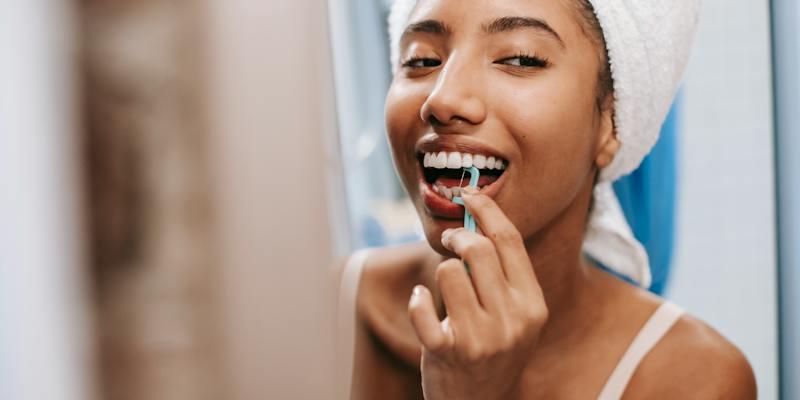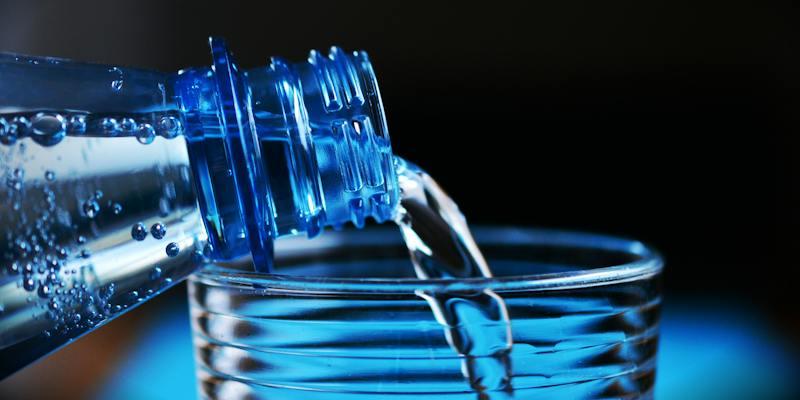Revitalize Your Smile: 7 Oral Care Techniques for Enhanced Confidence
Feb 01, 2024 By Nancy Miller
A beautiful smile is a wish many people have, and it's possible with proper dental hygiene. Start by brushing and flossing regularly. Fluoride toothpaste and a soft-bristled toothbrush should be used twice daily to brush all surfaces for two minutes. Daily flossing helps eliminate plaque and debris between teeth, boosting gum health. Keep a healthy diet, avoiding sugary and acidic foods that cause tooth damage. Maintain hydration to wash away germs and food particles. Prevention and early detection need regular dental checkups. Consider expert teeth cleaning for tough plaque and stains. You can have a confident, healthy smile by following these dental care suggestions and living a healthy lifestyle.
Brush for the Right Amount of Time
Better oral care routine takes more than a daily brush—it demands precision in technique and length. Did you know the ideal brushing session lasts two minutes? According to lifestyle online magazine Poosh, maintaining a pattern during these two minutes might improve your mouth care.
Brush for 30 seconds in each quadrant: upper right, upper left, lower right, and lower left. This comprehensive approach covers your whole mouth. Setting an alarm for a manual toothbrush helps maintain regularity. Spend at least five seconds cleaning each tooth in each quadrant, including the front, rear, and top. This thorough approach removes germs and plaque from all angles, improving dental health.
Electric toothbrushes' built-in timers help consumers brush for the necessary time. A healthier, brighter smile requires consistency, precision, and attention to detail when brushing, regardless of the toothbrush.
Floss Effectively

Maintaining a healthy smile requires flossing in addition to brushing. Although your toothbrush can clean 60% of your tooth surfaces, germs can still live in the gaps between teeth and under the gum line. Thus, everyday flossing is essential for these hard-to-reach places. One tooth at a time, softly slide the floss and massage the side of each tooth. This method removes plaque and debris, improving gum health and avoiding cavities in hard-to-reach areas. You can floss before or after brushing for best results.
Strategic Mouthwash Use
Mouthwash is one of the popular oral care products that freshens breath and kills microorganisms. It must be used strategically to maximize its effects without affecting other dental products. Most mouthwashes remove germs, but their main purpose is breath freshening. Poosh, a lifestyle online magazine, recommends timing mouthwash to maximize its effects. Dental professionals prescribe a systematic oral care program. Interestingly, mouthwash after brushing may not be best. Some mouthwashes can rinse out toothpaste's dental-healthy components.
Start with brushing to apply key dental components, then floss to target interdental regions, and finish with mouthwash to maximum effects. This sequence helps each product perform well, creating a complete dental care regimen. People may improve their oral health and breath by knowing when to use mouthwash.
Bring Back Your Natural Teeth Whitening
A white smile is a frequent goal, but chemical whiteners aren't always necessary. Natural powders placed on toothpaste are an option. This delicate method respects dental sensitivity and avoids the unwanted effects of strong whitening products. Poosh advises a safe and natural turmeric-based whitening remedy for those who prefer a hands-on and DIY method. The main component is turmeric, known for its anti-inflammatory and antioxidant qualities. Together with coconut oil, it makes a paste that may be gently applied to teeth.
Note that natural procedures may take longer to produce effects than chemical ones. Their promise of a chemical-free, brighter smile is appealing. As with any dental care change, consult your dentist before trying new whitening methods. This guarantees that your approach supports oral health and doesn't damage your teeth or gums. Enjoy natural tooth whitening and confidence with your soothing, eco-friendly oral care routine.
Timing Matters for Stronger And Healthier
After a meal, reaching for your toothbrush is a good idea for dental health. However, understanding the process and why quick brushing may not be optimal is essential.
Acidic and sugary meals destroy tooth enamel. These foods temporarily weaken enamel, making teeth susceptible. You may accidentally remove particles if you clean your teeth shortly after eating, especially if the enamel is thin.
The Oral Health Foundation advises waiting an hour after eating to wash teeth for equilibrium. This interval allows your teeth to remineralize, depositing vital minerals on the enamel. Thus, your teeth strengthen and become less susceptible to enamel degradation after brushing.
Waiting may seem paradoxical, but it matches your oral care routine with your teeth's natural activities, strengthening and nourishing them. A thorough plan to keep a dazzling and robust smile includes careful post-meal oral care kit and optimum brushing timing.
Drink More Water And Fewer Sugary Beverages

According to extensive studies, sugary beverages like sodas and juices harm dental health. Experts agree that these drinks enhance cavity risk. Numerous studies have shown that sugary beverages promote the growth of dangerous germs in the mouth. Cavities arise when these bacteria create acids that destroy tooth enamel.
In response to these findings, dental practitioners recommend a proactive beverage choice strategy for oral health. Experts advocate water or unsweetened drinks as better options. Water satisfies thirst and boosts saliva production, neutralizing acids and protecting teeth.
Experts recommend limiting sugary drinks to prevent cavities. By doing so, people can improve their oral health and lower the risk of sugar-related dental disorders.
Avoid Smoking
A widespread habit with serious health effects, smoking harms dental health. The CDC lists smoking as a major risk factor for gum disease, illustrating the complex link between tobacco use and oral health. Periodontal disease—gum disease—is a chronic inflammatory disorder affecting gums and tooth support. Smoking, a known risk factor, impairs the immune system and accelerates gum disease. Tobacco smoke hinders tissue repair, especially oral tissue regeneration.
In addition to gum health, smoking damages dental appearance. Yellow teeth and tobacco-stained tongues are prevalent. The negative effects on breath quality cause smells that last after dental hygiene.
Smoking problems require multifaceted solutions. Quitting smoking is essential to oral health. Quitting smoking reduces gum disease risk and improves health—a healthy diet, frequent brushing, and flossing support quitting. Despite its first obstacles, good dental hygiene is essential for a bright smile and healthy teeth and gums. These practices improve oral and systemic health. A smoke-free lifestyle and good dental hygiene allow people to take charge of their health and enjoy a beautiful smile with oral care routine.







